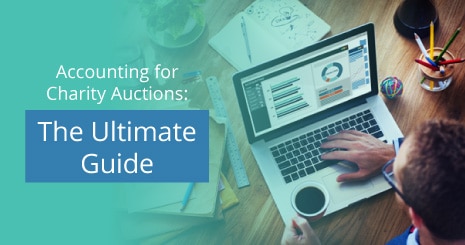Many organizations don’t have the luxury of a full-time accountant on staff, making the specific, tax-exempt circumstances for nonprofits challenging and confusing.
Charity auctions are a powerful fundraising source for nonprofits, however, and there are many intricacies to keep in mind.
Digital accounting tools, when paired with charity auction software, have made accounting and auction management easy for nonprofits of every size. We’ll cover the basics of accounting for charity auctions and how your organization can navigate them using digital tools, including:
- Acknowledging donated items
- Accounting for sales tax
- Correctly recording revenue
- Filling out your Form T3010
- Preparing your auction toolbox
From recording items when they’re donated to reporting the fundraising event after it’s over, this guide covers charity auction accounting from start to finish.
Let’s dive in!







